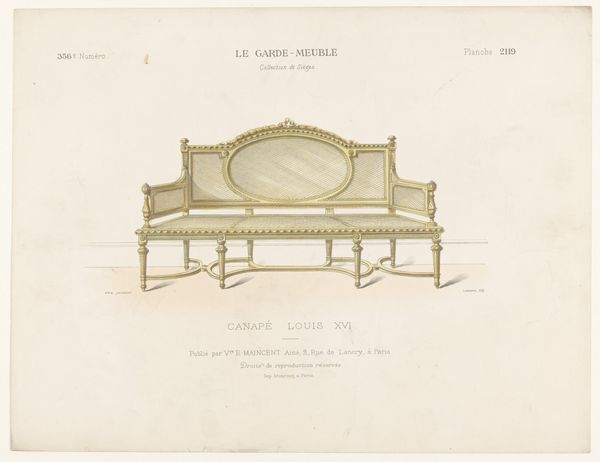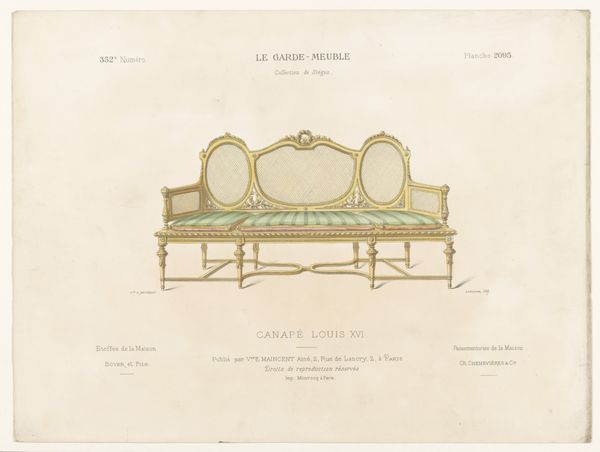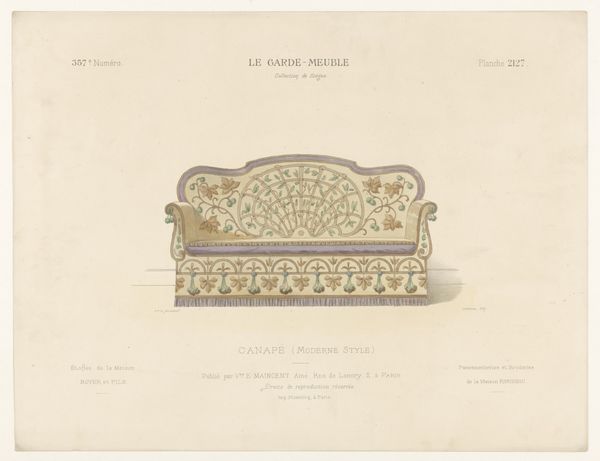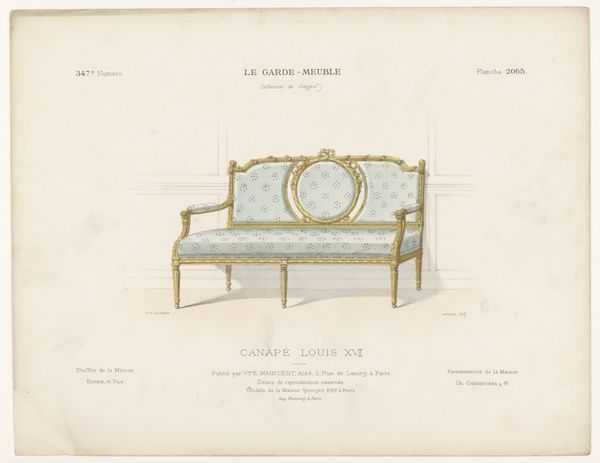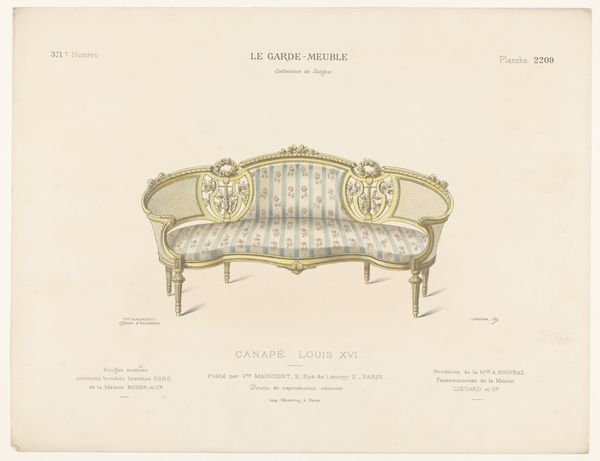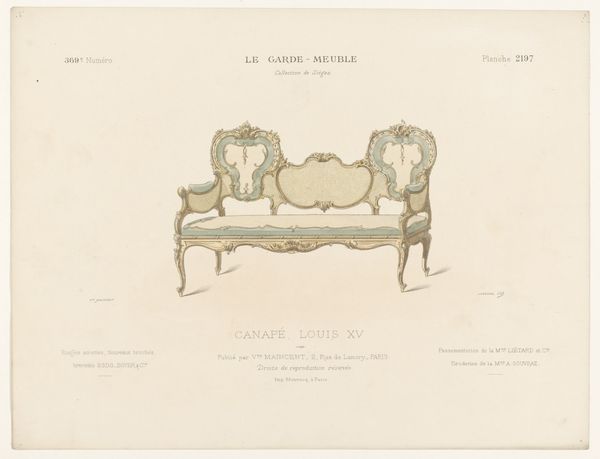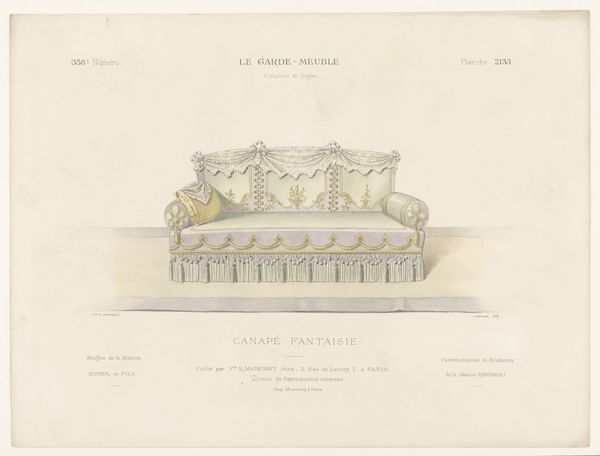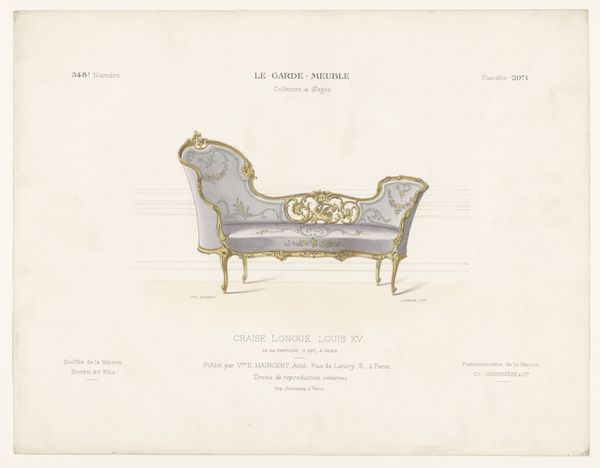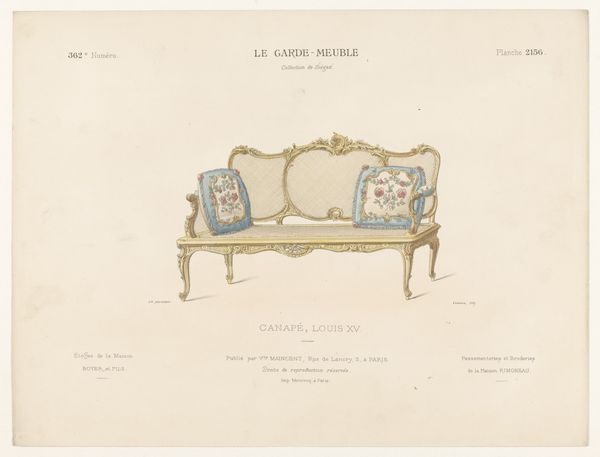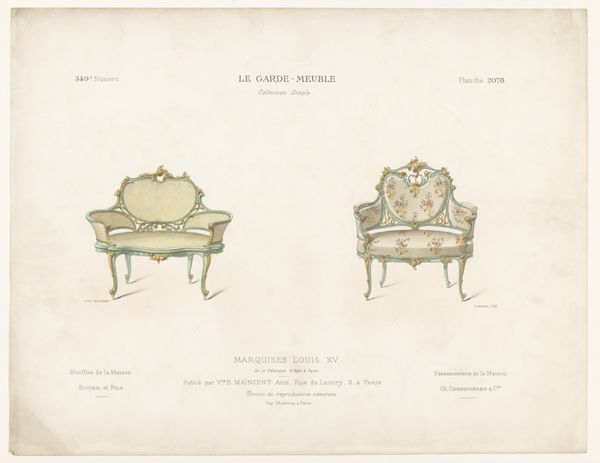
print, watercolor
#
art-nouveau
#
fancy-picture
# print
#
figuration
#
watercolor
#
intimism
#
watercolour illustration
#
decorative-art
#
watercolor
Dimensions: height 274 mm, width 359 mm
Copyright: Rijks Museum: Open Domain
Editor: This watercolor print, "Canapé," created sometime between 1895 and 1935 by Léon Laroche, depicts an ornate sofa. I notice how light and airy the rendering is; the pastel colors create a rather dreamy effect, almost as if we’re looking at a memory rather than a real object. What kind of symbols or cultural memories come to mind when you look at it? Curator: I see a convergence of social aspirations and a yearning for comfort, both physical and emotional. Consider the Canapé itself, elevated beyond mere functionality to a "Canapé Fantaisie" as it's named here. The floral motifs woven into the frame, the delicate tassels, and the overall soft palette evoke an intimacy—a space for reverie or perhaps a discreet rendezvous. The floral motifs have a long association with femininity and domesticity. How do they speak to this, do you think? Editor: It seems to be about cultivating a feminine and fashionable interior space that's refined, yet inviting. Is there anything more to that particular time period? Curator: Absolutely! Consider the rise of industrial production and the subsequent yearning for handcrafted beauty. The print romanticizes furniture design by highlighting handcrafted elements. It served as both a decorative piece and a means for aspiring middle classes to acquire good taste, and also displayed to potential patrons possible design and stylistic trends from furniture workshops. Editor: So the canapé is more than just a canapé—it represents aspiration and memory. Curator: Precisely! Through close examination of such symbols and their place in daily life we unveil cultural meanings that continue to subtly shape our own desires and dreams. Editor: Thank you, this deeper understanding has truly enriched my view of this print!
Comments
No comments
Be the first to comment and join the conversation on the ultimate creative platform.
